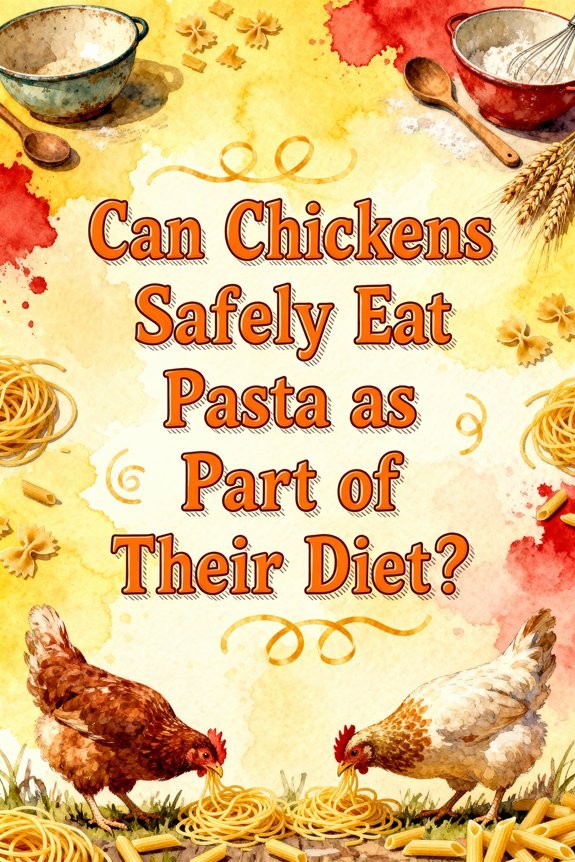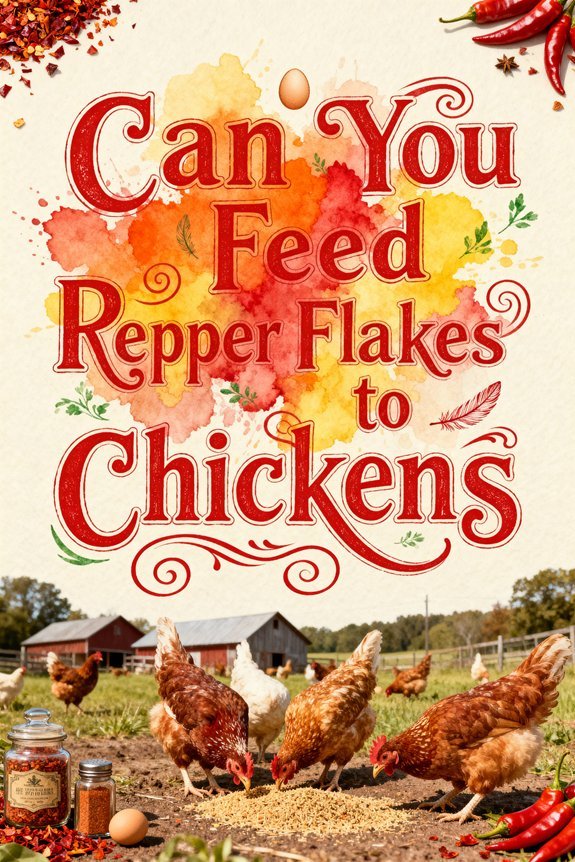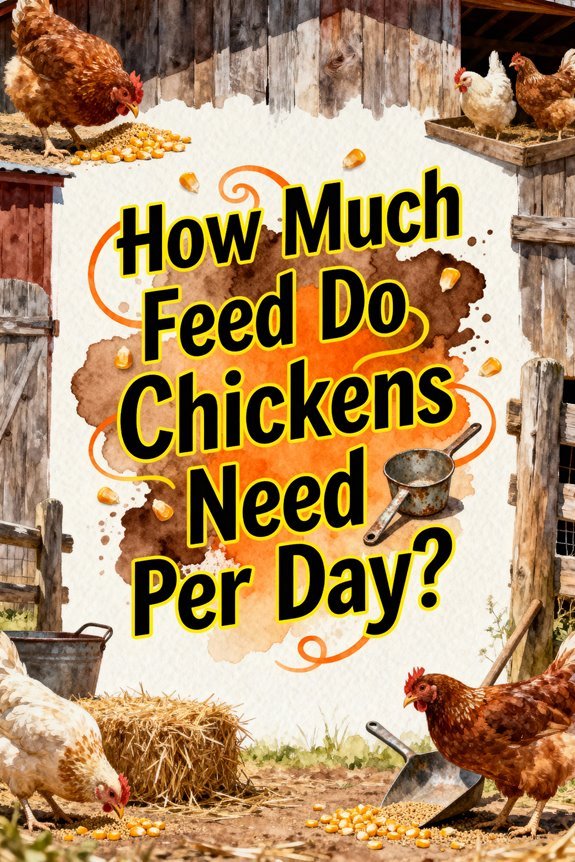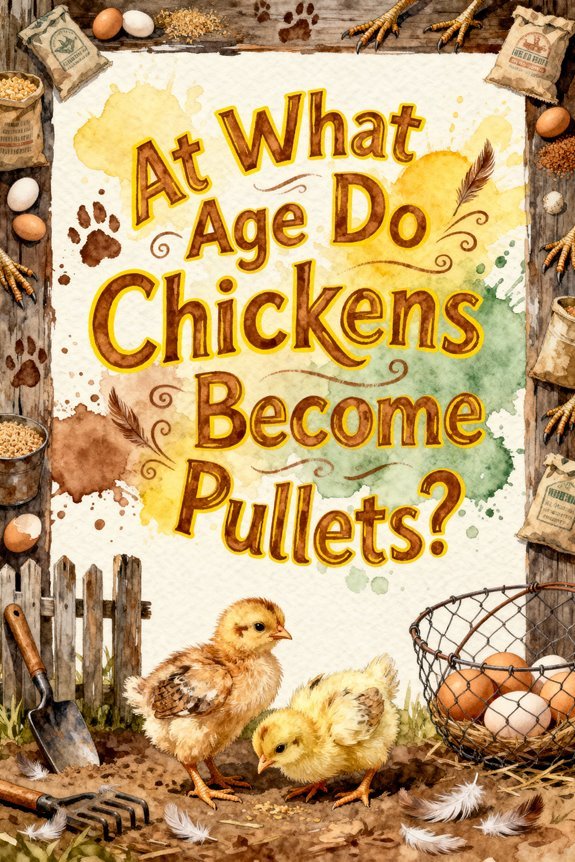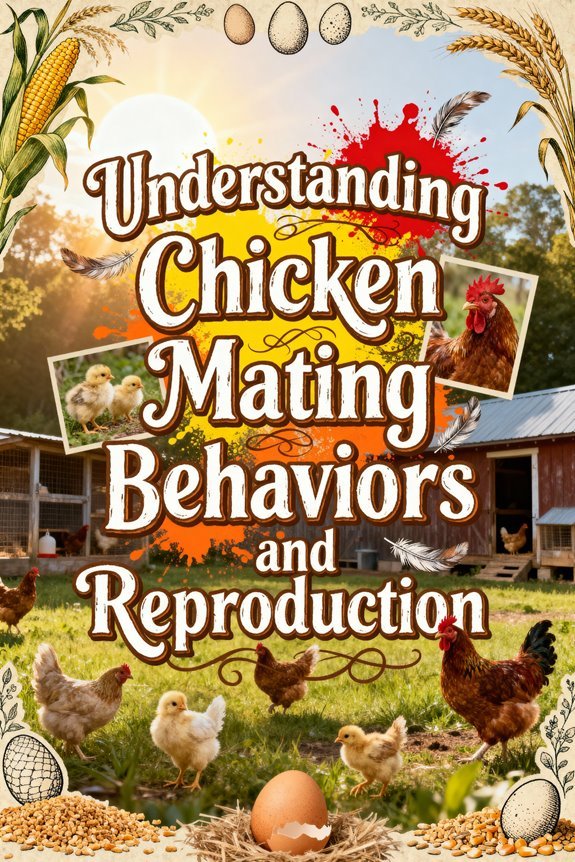Can Chickens Safely Eat Pasta as Part of Their Diet?
Yes, you can safely feed pasta to your chickens as an occasional treat when properly prepared. Make sure it’s thoroughly cooked, cooled, and cut into small pieces to prevent digestive blockages. Keep portions under 5% of their daily diet, serve it plain without seasonings or sauces, and monitor your flock for adverse reactions. While pasta provides some protein and carbohydrates, it lacks essential nutrients vital for ideal chicken health. Understanding proper preparation methods and serving guidelines will help maximize this treat’s benefits.
The Safety of Feeding Pasta to Chickens
While chickens can consume pasta as an occasional treat, understanding its safety implications is crucial for proper feeding practices. When considering pasta types, you’ll need to guarantee they’re properly cooked, as raw pasta can expand in chickens’ digestive tracts and cause blockages. Avoid long noodle strands that might tangle in their digestive system.
Feeding frequency must remain limited, as pasta’s high carbohydrate content can lead to nutritional imbalances and fatty liver disease. You’ll want to serve only plain, unseasoned pasta without sauces or salt, as chickens can’t process excess sodium effectively. When offering pasta, verify it’s fresh and free from contamination. Always provide clean water and grit to aid digestion, and maintain pasta as just one component of a varied diet that primarily consists of formulated feed.
Proper Preparation and Serving Guidelines
Proper pasta preparation directly impacts your chickens’ health and safety when offering it as a treat. You’ll need to cook the pasta thoroughly, as raw noodles can impede digestion and cause crop problems. When implementing serving techniques, cut longer pasta pieces into smaller sections to prevent choking hazards.
Never add sauces, seasonings, oils, or fats during pasta cooking, as these additives can harm your flock’s digestive system. Serve the pasta plain and make certain it’s cooled to a safe temperature. You’ll also want to provide fresh water and grit alongside the pasta to support proper digestion. Monitor portion sizes carefully, keeping pasta treats to less than 5% of their daily diet. Always inspect the pasta for signs of spoilage or mold before serving, and use clean utensils to prevent contamination.
Nutritional Benefits and Limitations
Understanding pasta’s nutritional profile reveals both benefits and limitations for your chickens’ diet. While pasta provides decent protein sources for muscle maintenance and tissue repair, it’s incomplete compared to formulated feed. You’ll find it’s particularly valuable as a carbohydrate source, delivering quick energy balance for daily activities.
Like other healthy treats, pasta should be offered alongside nutrient-rich vegetables like kale and chard. The fiber content, though moderate at 1.2g per 100g, supports digestive health and nutrient absorption. However, pasta’s significant limitations include deficiencies in essential vitamins and minerals, particularly calcium, vitamin A, and selenium. You shouldn’t rely on pasta as a primary feed source, as it can’t fulfill your flock’s complete nutritional requirements. Keep pasta portions under 10% of total dietary intake to maintain ideal nutrition while avoiding potential deficiencies that could impact growth and egg production. Commercial feeds like Purina and Nutrena offer balanced nutrition with essential amino acids specifically formulated for optimal chicken health.
Potential Health Risks and Concerns
Despite pasta’s potential as an occasional treat, feeding it to chickens carries several considerable health risks that warrant careful consideration. Raw pasta can cause dangerous digestive blockages as it expands in the crop and stomach, while long noodle strands may become fatally tangled in the digestive tract. You’ll also risk creating nutritional imbalance, as pasta’s high carbohydrate content can dilute your chickens’ intake of essential proteins, vitamins, and minerals from their regular feed.
The risks extend beyond digestive issues. You’re potentially exposing your flock to fatty liver disease, obesity, and compromised immune function. Improper preparation involving high salt content can lead to severe dehydration and kidney damage in chickens. There’s also the danger of bacterial contamination from spoiled pasta or toxic exposure from seasonings and additives. These health complications can considerably impact egg production and your chickens’ overall wellbeing.
Best Practices for Pasta as a Treat
When feeding pasta to chickens, implementing careful serving protocols maximizes nutritional benefits while minimizing health risks. You’ll want to cook plain pasta until soft, avoiding any seasonings or sauces that could harm your flock. Different pasta varieties should be introduced gradually to determine your chicken preferences and monitor for adverse reactions.
Serve pasta on clean feeding dishes, limiting portions to what your chickens can consume within 10-20 minutes. Pair the pasta with protein-rich foods or fresh fruits to enhance nutritional value. You should only offer pasta once daily, preferably in early afternoon, while maintaining unlimited access to complete poultry feed. Store dry pasta in sealed containers and always prepare fresh portions rather than serving leftovers to prevent bacterial contamination. Consider pasta a nutrient imbalance risk if fed too frequently as it lacks the balanced nutrition chickens need for optimal health.
Alternative Treat Options for Chickens
Although pasta can serve as an occasional treat for chickens, numerous nutritionally superior alternatives exist that better complement their dietary needs. You’ll find excellent options in fresh vegetables like leafy greens, root vegetables, and squash varieties, which provide essential vitamins and minerals. Protein-rich insects, including mealworms and black soldier fly larvae, support feather health and egg production while mimicking natural foraging behaviors. While chickens make great disease sentinels by helping detect mosquito-borne viruses, they require diverse nutrition to stay healthy. Many chicken owners create flock blocks using wholesome ingredients like molasses, oats, and coconut oil for sustained nutrition and entertainment.
Since chickens are natural omnivores, they actively seek out diverse food sources in their environment. For maximum nutritional benefit, you can offer your flock watermelon, seedless grapes, and various berries that encourage natural pecking behaviors. Sprouted whole grains and seeds deliver enhanced nutrition compared to processed treats. Additionally, culinary herbs and pesticide-free weeds like chickweed and dandelions provide both nutritional value and environmental enrichment for your chickens’ daily foraging activities.
Monitoring Your Flock’s Response
Since introducing pasta into your chickens’ diet requires careful observation, you’ll need to monitor several key indicators of their health and well-being. Through systematic flock observation, watch for digestive issues like diarrhea, bloating, or changes in droppings. Monitor their behavior tracking for signs of lethargy, decreased social interactions, or excessive scratching.
Pay close attention to egg production quality and quantity, as these can signal nutritional imbalances. You’ll want to document any weight fluctuations, feather condition changes, or signs of anemia. If you notice symptoms like tremors, respiratory distress, or sudden aggressive behavior, immediately separate affected birds from the flock. Keep detailed records of feeding amounts and any health changes to establish patterns and adjust their diet accordingly.
